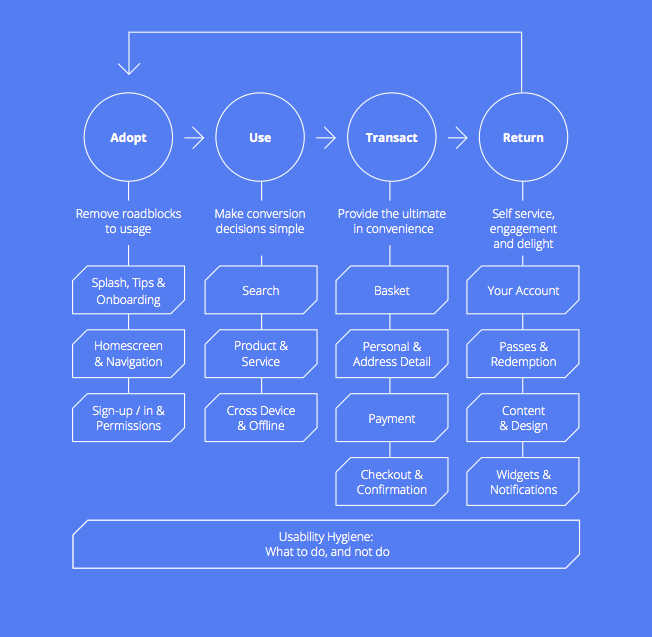Google advises how to design the perfect app
Google has released a report to help app developers improve the user experience of new apps through design.

Google is targeting app designers with a report it has published which advises developers on how they can maximise user experience.
The report, Mobile App UX Principles: Improving User Experience and Optimising Conversion, has been initiated by Google, which identifies a “critical” need to “improve user experiences and conversions” in the light of apps “shaping new transactional and service expectations.”
Four key principles have been defined to help guide designers and developers. The first of these, Adopt, is concerned with “removing roadblocks” to usage and adoption.
This includes getting users into content as quickly as possible by engaging them with the splash screen (opening screen). “Never make users wait” and only offer tips or help where needed, Google advises.
A homescreen should help users complete priority tasks and navigation should be clear and task orientated, with only primary navigation and content visible by default.
Google is clear in its advice on data capture too: “Only if your app is dependent on user data to provide value should you request sign-up – and then, you request the absolute minimum data, and display clear benefit statements for sign-up.”

“Conversions” are defined as actions such as “add to basket”, “add to wish list” and “book now”. These customer decisions are made on the strength of strong product screens according to Google, enabling users to quickly transact, save for later, and share the items they have to make decisions on.
In its advice on “Use”, Google recommends: “Make conversion decisions simple.” As such, people should be able to search quickly and effectively for what they want and continue their “transaction journey” across multiple devices.
In its “Transact” advice Google says that developers should place emphasis on convenience so that users pass through each checkout stage, with minimum effort in a “reassuring” environment with no other distractions.
Return and repeat transactions can be encouraged by making provision for pre-populated (pre-determined) data, allowing one-click repeat transactions, and creating a single-screen check out.
To encourage “Return” Google says an app must be useful and must “engage and delight” so that customers are retained and that loyalty is encouraged.
The value of strong content and design is also recognised in its advice on customer retention: “Enhance the user experience with appropriate content, your tone of voice, engaging visual design, the subtle use of motion and transitions, or by providing better ways to discover content or items – and ensure the user never confronts dead-ends.”
In a separate piece of research carried out by Ipsos for Google, called App-Nesia, Google found that most people prefer using apps to using browsers on a mobile because they’re quicker to load, easier to navigate, and they save log in details. However the main finding of App-Nesia is that people are downloading apps and then forgetting to use them.
You can view the full report here.





Could we get a link to the original Google document?
Hi Chris, we’ve just added a link – you can find it here http://d214ppjmb938of.cloudfront.net/content/uploads/2015/04/Mobile-App-UX-Principles_Full-Report_Final.pdf